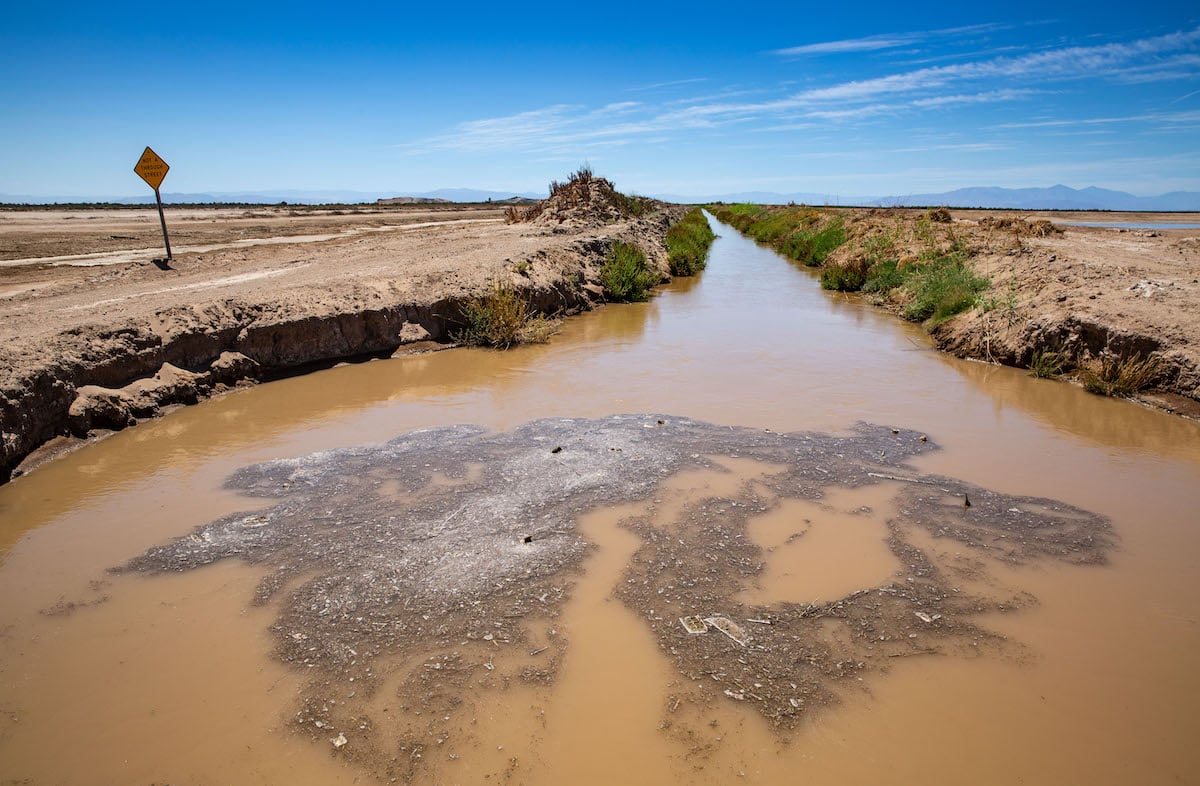There is a stinky, muddy pit in California that has been on the move since 2016. Yes, it has been traveling the desert and nobody seems to know why.
The Niland Geyser formed in Mundo, California in 1953 and is one of many similar “mud pots” in the area. The reason for its sudden migration is disputed among geologists, with no agreed-upon answer, but its rapid south-westerly journey has been cause for headache among city planners and developers.
The pool, nicknamed The Slow One, definitely started slow. It traveled about 20 feet in all of 2018, then sped up in 2020, moving a staggering 10 feet per month. It has continued moving perpendicular to fault lines, and thus far is the only confirmed mobile natural phenomena of its kind. Though not technically a geyser, it is generally referred to as such; but its composition is more akin to quicksand than a heated spring.
In 2017 it overtook a drainage ditch designed to divert its muddy waters away from the Union Pacific Railroad, which cuts through the California desert. Continued efforts at diverting The Slow One’s bubbling waters resulted in failed manmade reservoirs (which resulted in massive blowouts of muddy water), piles and piles of stone being dumped in and around the geyser (which was swallowed up almost immediately), 40,000 gallons of water pumped out of the mud pot per day (which revealed that The Slow One is about 25 feet deep), and the addition of an 80-foot steel sheet being planted between the geyser and the tracks. In a matter of months, The Slow One overtook the sheet, after making quick work of all the other attempts.
Eventually, the geyser overtook the tracks and extensive engineering maintenance was required every day to keep them operational. Even so, trains relying on the railroad had to decrease speed and use temporary tracks to avoid being derailed by the muddy ground.
In 2019, The Slow One caused similar issues with California State Route 111, the highway connecting Southern California to Mexico. With the geyser crawling directly toward the road, a roughly $20 million project was undertaken to stop it. This plan counted on permanent damage caused by the water, and factored in the reconstruction of the road once the geyser passed. Steel sheets, drainage ditches, temporary roads, and gravel barriers were all put in place to stymie the flood; with moderate success.
In 2020, The Slow One put underground fiber-optic lines owned by Verizon and At&T, who eventually had to move the lines to avoid the geyser’s touch. Similarly, a fuel pipeline owned by Kinder Morgan had to be relocated at the cost of about $3 million to prevent an ecological disaster should the geyser damage the pipeline and cause a leak.
Today, the geyser is expected to continue its current path toward the Salton Sea. If this is the case, it will cross ponds, fields, a parking lot, and a second road. Does The Slow One count as a cryptid? Whatever, it’s my new favorite. Sorry, Mothman.
(featured image: George Rose/Getty Images)










Published: Nov 2, 2023 03:21 pm